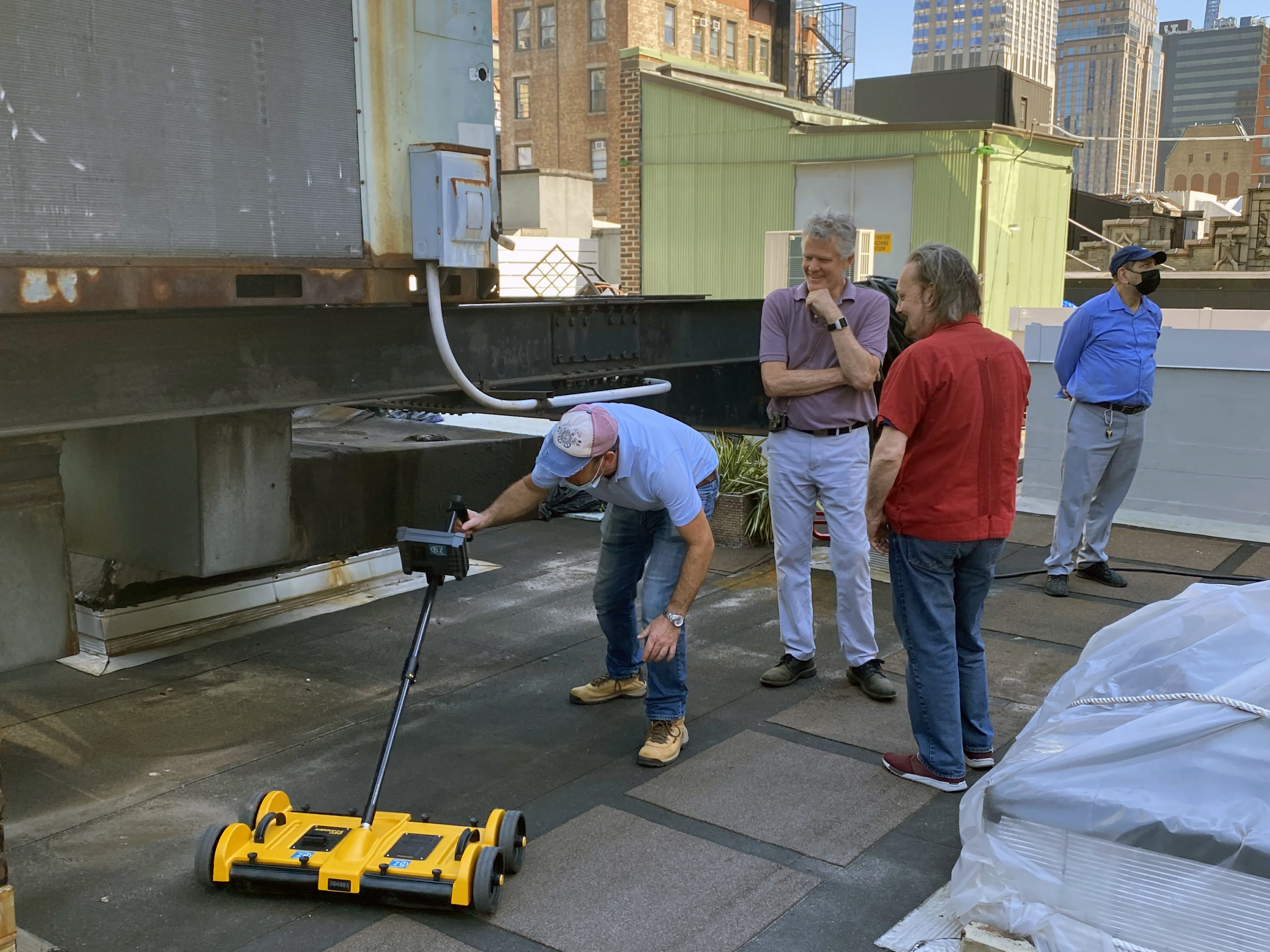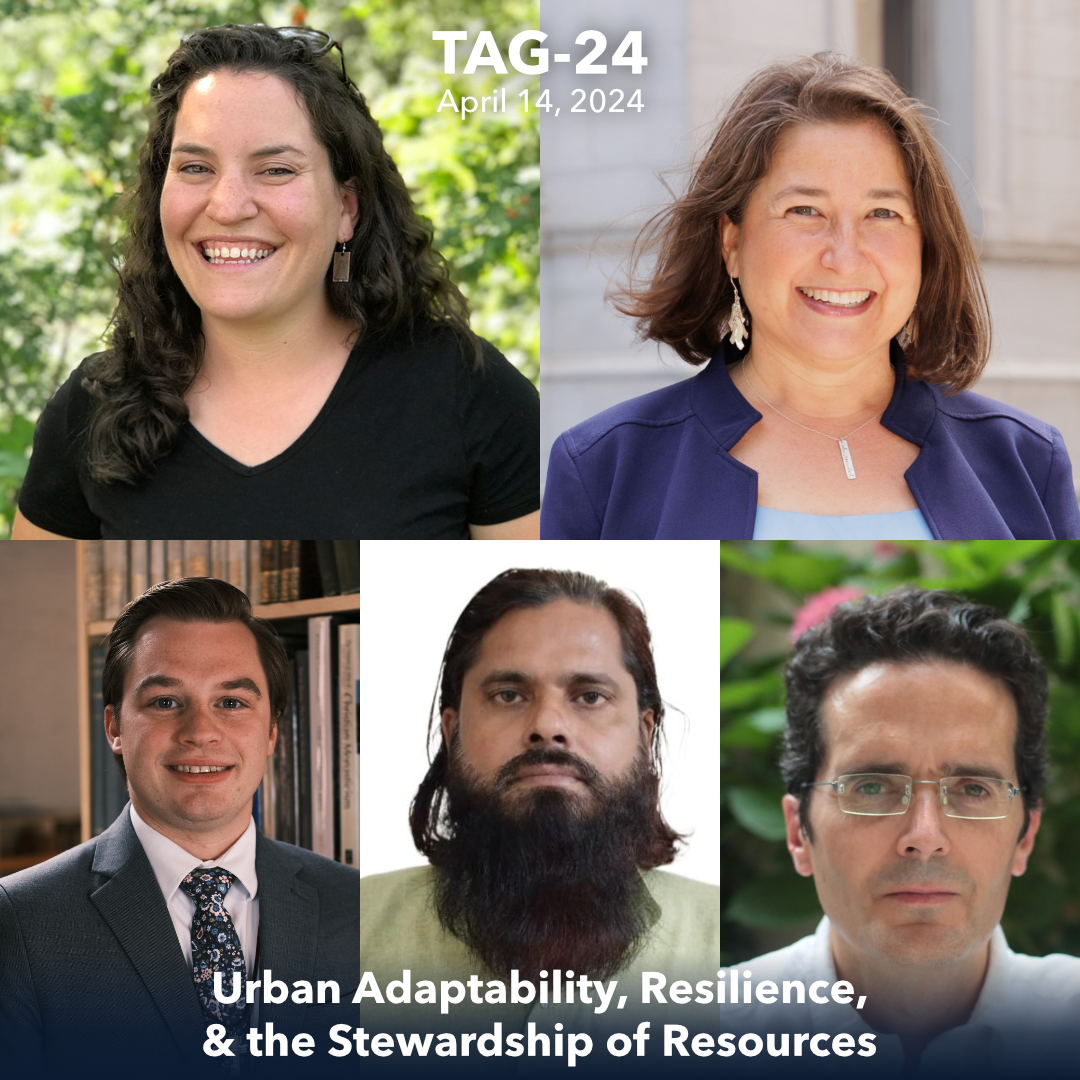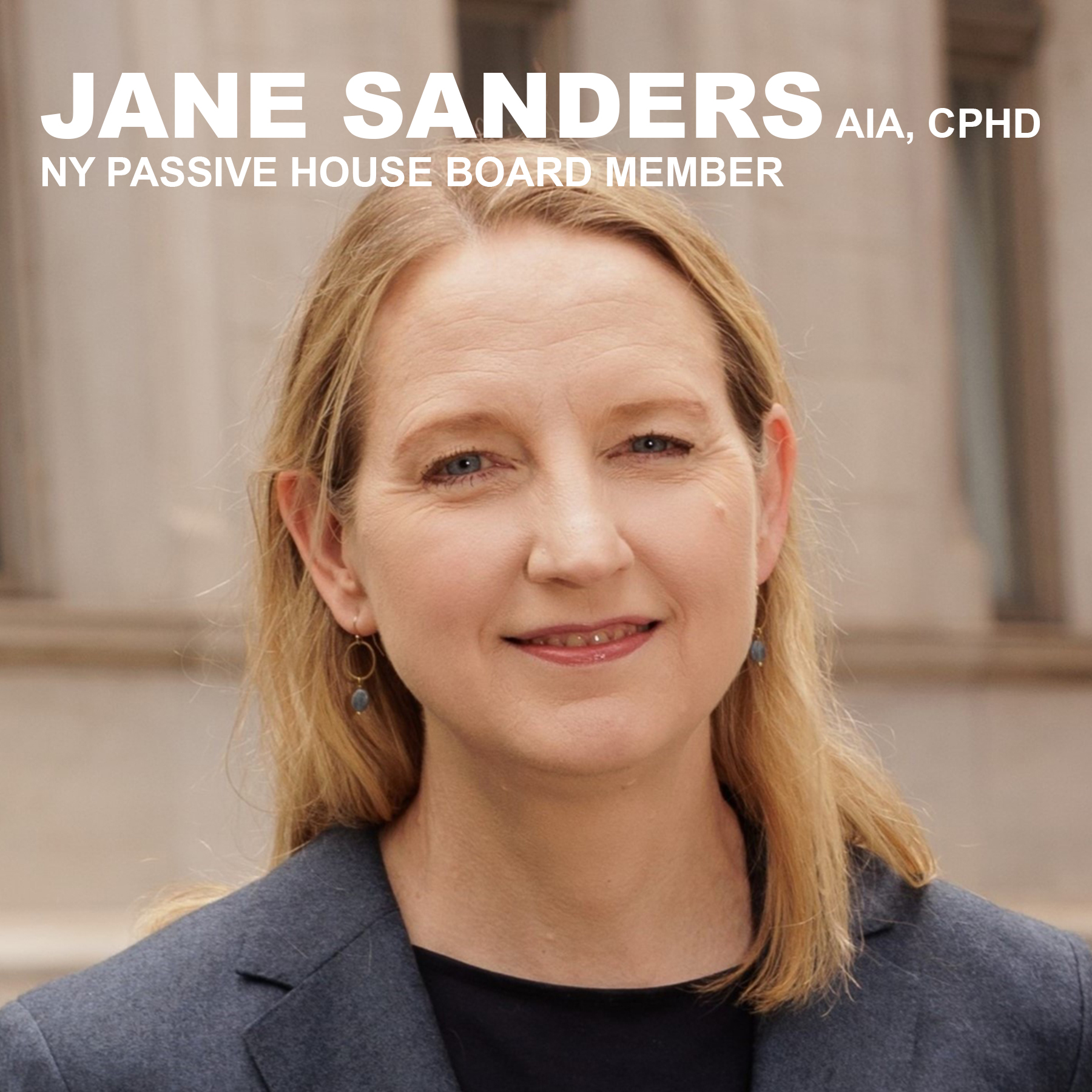Assessing water tightness, or lack thereof, on the roof of a building is incredibly important in maintaining overall building performance. Most obviously, leaks can cause deterioration of interior spaces, building materials, structure, interruption of occupants’ lives, and damage to personal property. In addition to the deterioration mentioned above, wet insulation can also ruin the thermal performance of the roof assembly. Water transfers energy readily, so when wet, the R-Value of some forms of insulation will be reduced significantly.
Architects and Engineers use a variety of techniques and tools to conduct “forensic studies”, of buildings, investigating damage and/or revealing hidden defects. Forensic investigations must be thorough enough to understand the causes of water infiltration and the extent of the damage. They can help support educated judgments being made on when and what to repair, as roof membrane and insulation replacement can be very expensive projects. As part of a recent leak inspection on a roof in Midtown Manhattan, Henson Architecture’s Matthew Radune and Eric Hammarberg oversaw an Electrical Capacitance survey by an experienced technician that was instrumental in discovering potential pathways of water infiltration into the building and assessing the extent of moisture entrapment under the roof membrane. Leaks on the inside of a building make their presence known, but the entry points for these leaks could be in a completely different area, even on low-sloped (flat) roofs.
Electrical Capacitance (EC) is a non-destructive testing technique used to quickly identify areas of entrapped moisture within a roof assembly and possible water entry pathways by measuring conductance over a surface. Other forms of Nondestructive Testing (NDT) or Nondestructive Evaluation (NDE) techniques for water infiltration include Infrared Thermal Imaging (IRT) and, Nuclear Imaging. For this investigation, IRT was also used at the apartment on the top floor to help confirm the area of moisture above the ceiling drywall.
The investigation using electrical capacitance utilized a machine that looks like a lawnmower with a built-in needle meter. The machine transmits low-frequency signals through the roof membrane and into the insulation or other substrate down to a 6” depth and receives ‘echoes’ as it is rolled over the roof. Impedance, the effective resistance of a component to alternating current, is measured. When properly calibrated, no readings are registered over a dry roof assembly.
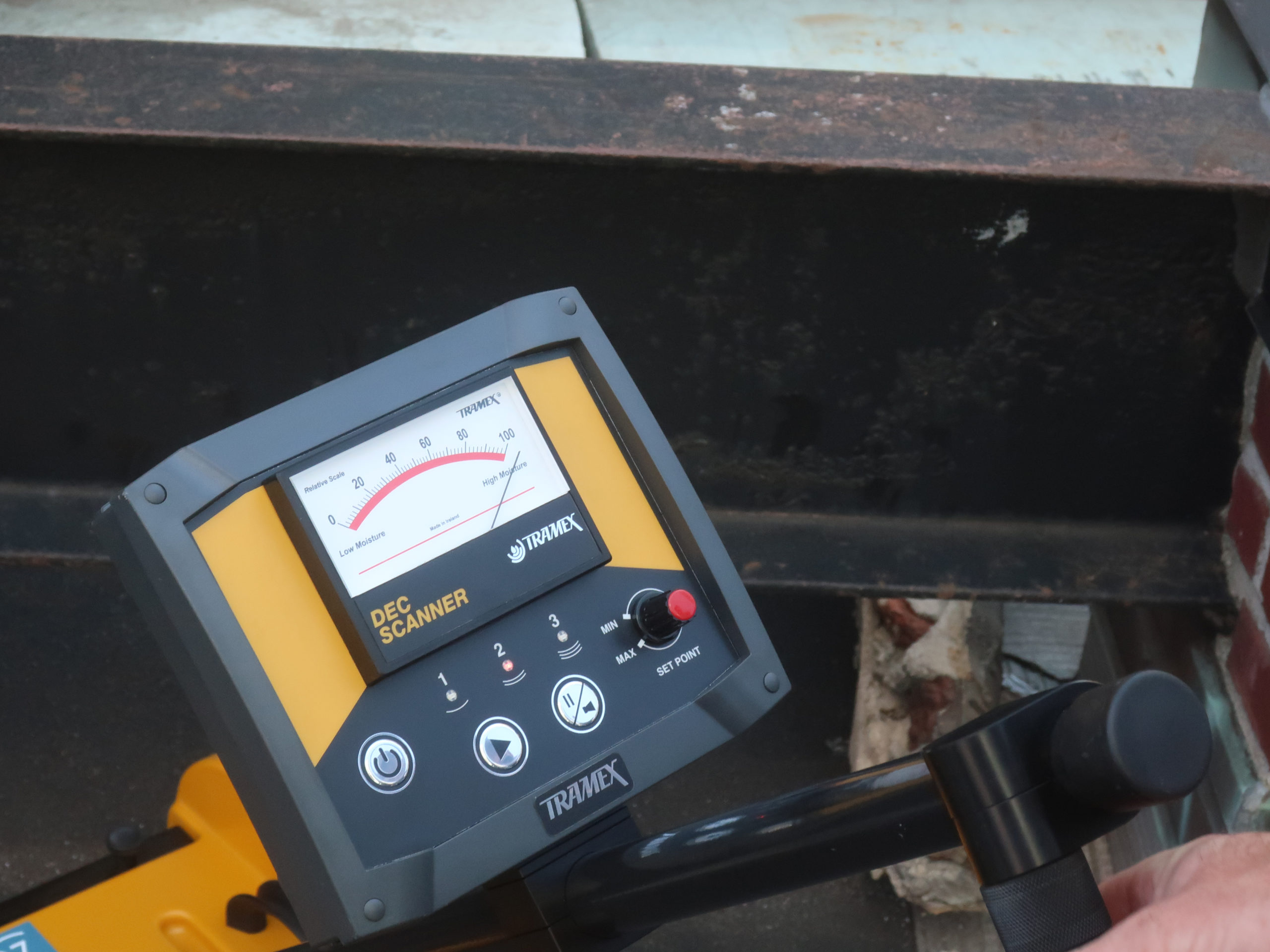
Photo Credit: Eric Hammarberg
The presence of moisture under a roof membrane causes a dramatic increase in its electrical conductance, and decrease in resistance. Resistance and reactance are the two forms of opposition to electron flow. Meter readings will increase relative to the extent of moisture content. The technician walked back and forth with the machine and noted areas where the meter readings were high. These machines have been improved over the last ten years to detect to a greater depth as building codes have focused on higher thermal performance and the required amount of insulation used on roofs has increased.
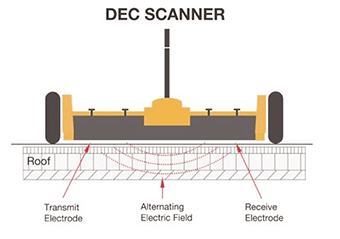
Image Credit: Tramex
While this machine was not technically mapping the roof during this survey (it can perform this function if required), it showed where there were suspected areas of high moisture content. As the technician worked, he marked the surface of the roof membrane with lines and arrows in crayon to identify the outer edges of the moisture areas detected, and a general shape emerged. The machine includes a sensitivity dial that allows a fine-tuned review of areas where there is moisture detected.
Within an hour or two, the technician had produced a cohesive shape on the roof, and our search for where to look for water infiltration points of entry was simplified. Within this area, we were then able to focus our attention on conditions where flashing failure was suspected and could call these out for further leak tests or future repair. To verify water infiltration and any damage to the insulation or the other layers of the roof assembly, probes at the roof membrane within the suspected area will be completed in the near future.
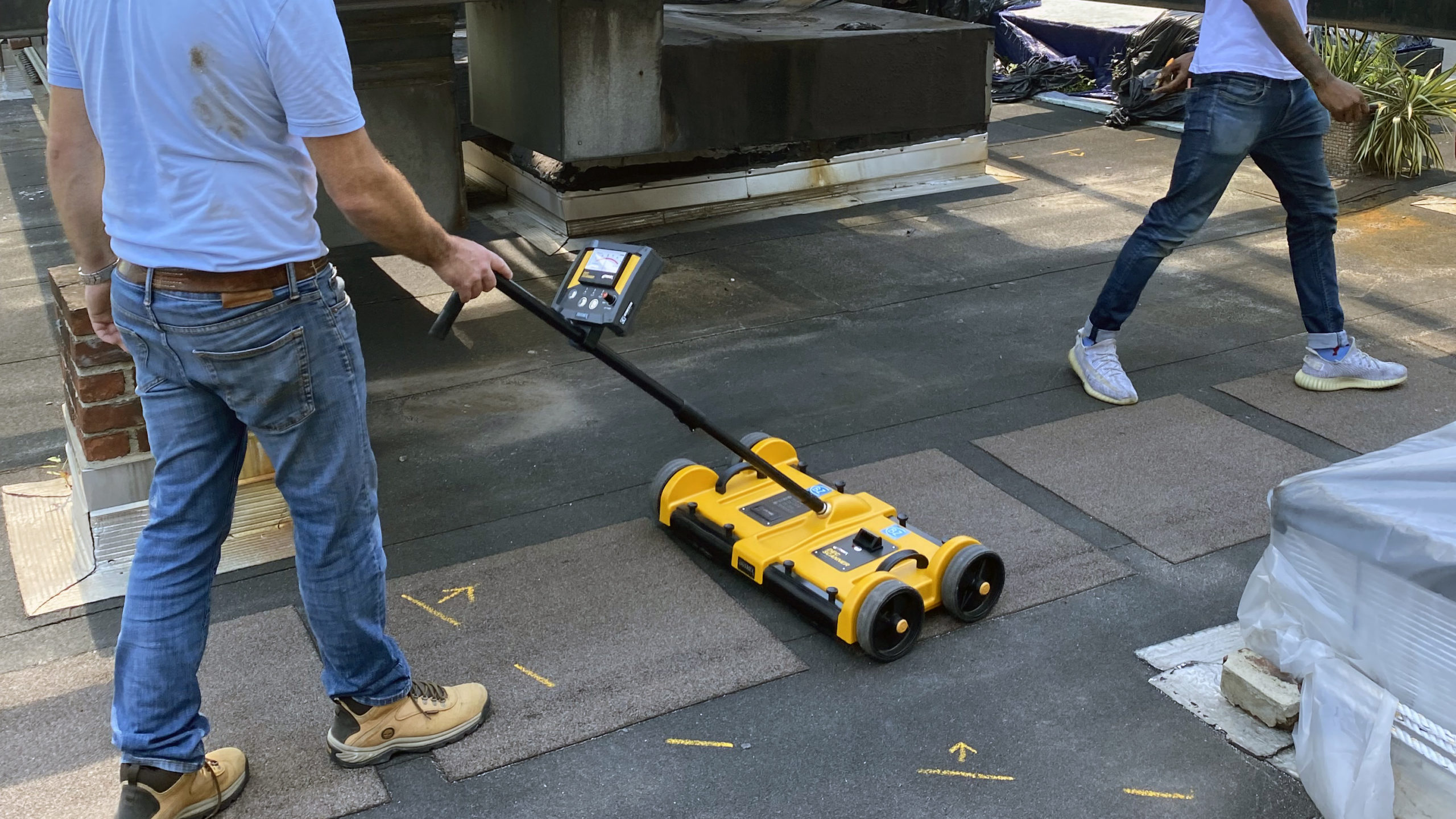
Photo Credit: Matthew Radune
EC Surveys can be done during the day, at virtually any time of year, and on almost any type of roof, so long as there is no standing water. Its operation appears simple, and it is usually less expensive than thermal imaging or the nuclear technique. Although it is impossible to find the absolute boundaries of a known wet area (without cutting or coring into the roof membrane), it can get close.
However, there are limitations to this particular technology. EC surveys cannot be done on membranes that are electrical conductors, such as high carbon black EPDM roofs and those with aluminum coatings. It is important to remember that it does not pinpoint the path of the leak from above membrane into the building, rather it solely identifies wet areas.
The industry standard for moisture surveying was captured in ASTM D7954, introduced in 2014; “Practice for Moisture Surveying of Roofing and Waterproofing Systems Using Non-Destructive Electrical Impedance Scanners”. The practice of moisture surveying could be beneficial:
- After installation of the roof membrane to determine if there was any moisture intrusion during construction.
- At regular intervals as part of a preventative maintenance program.
- Identify the general extent of infiltration and possible sources after a leak is observed.
- Before replacement or repair work, to assist in determining the extent of work and replacement materials.
This is a great forensic tool, providing information for the Project Architect conducting the investigation to understand the existing performance of a roof assembly more fully and be able to review findings with the building owner and property manager to determine the next steps for roof repairs or replacement.
Does your building have performance or code-related issues with the roof that EC Surveys could help with?
Get in touch with Henson Architecture today about EC Surveys.
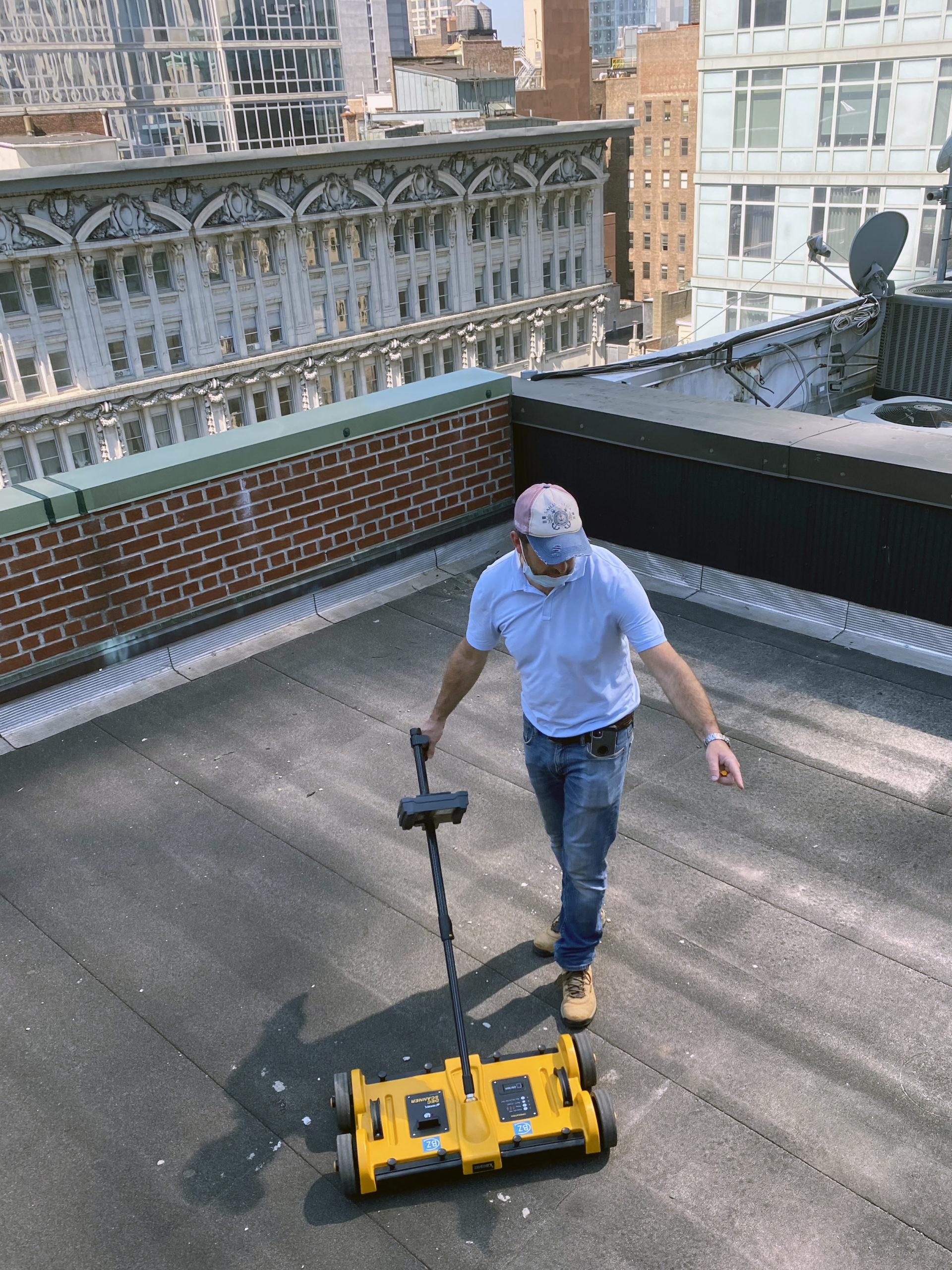
Photo Credit: Matthew Radune

